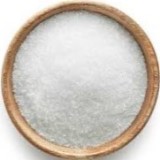|
|
|
Acetic Acid Glacial & Solution ---- Boric Acid ---- Formaldehyde Solution ---- Fumaric Acid ---- Lactobionic Acid ---- Maleic Acid ---- Malic Acid ---- Oleic Acid ---- Phosphoric Acid ---- Phosphorous Acid ---- Phthalic Acid ---- Picolinic Acid ---- Picric Acid ---- Pidolic Acid ---- Propionic Acid ---- Pyruvic Acid ---- Salicylic Acid ---- Selenious Acid ---- Sorbic Acid ---- Stearic Acid ---- Succinic Acid ---- Sulfamic Acid ---- Tartaric Acid ---- Undecylenic Acid |
|
Sulfamic Acid or Sulphamic Acid CommercialMSDS of Manufacturers & Exporters
Sulfamic Acid or Sulphamic Acid SDS, Safety Data Sheet 1. Product Identification Product Name & Other Names: Sulfamic Acid or Sulphamic Acid 2. Hazards Identification GHS, Globally Harmonized System Classification in accordance with 29 CFR 1910 Skin corrosion/irritation (Category 2) H315 Labeling according to GHS USA & Regulation (EC) No 1272/2008
Signal Words: Warning Hazard Statements: Precautionary Statements: 3. Composition/Information on Ingredients Product Name & Other Names: Sulfamic Acid or Sulphamic Acid 4. First Aid Measures Always seek medical attention after first aid measures are provided. Inhalation: Remove to fresh air. If not breathing, give artificial respiration. If breathing is difficult, give oxygen. Do not use mouth-to-mouth method if victim inhaled the substance. Induce artificial respiration with the aid of a pocket mask equipped with a one-way valve or other proper respiratory medical device. Get medical attention. 5. Fire Fighting Measures Products of Combustion: Nitrogen oxides, Sulfur oxides and Fumes. 6. Accidental Release Measures Personal precautions: Ensure adequate ventilation. Keep people away from and upwind of spill/leak. Do not touch damaged containers or spilled material unless wearing appropriate protective clothing. Ventilate closed spaces before entering. Keep out of low areas. 7. Handling and Storage Precautions for safe handling: Keep away from sources of ignition - No smoking. Take measures to prevent the build-up of electrostatic charge. Do not handle or store near an open flame, heat or other sources of ignition. All equipment used when handling the product must be grounded. Use only under a chemical fume hood. Apply according to good manufacturing and industrial hygiene practices. Ensure proper ventilation. Wash thoroughly after handling. Do not drink, eat or smoke while handling. Avoid contact with skin, eyes and clothing. Minimize dust generation. Avoid breathing dust/fumes/gas/mist/vapors/spray. Keep container tightly closed. Avoid ingestion and inhalation. Use individual protective equipment (waterproof boots, suitable protective clothing, safety glasses, etc). Prevent any contact with hot surfaces. Avoid prolonged exposure. Do not empty into drains. 8. Exposure Controls/Personal Protection Airborne Exposure Limits: Not established. 9. Physical and Chemical Properties Appearance: White Powder. 10. Stability and Reactivity Stability: It is stable under ordinary conditions of use and storage. 11. Toxicological Information Toxicity data: 12. Ecological Information Toxicity to fish: static test LC50 - Pimephales promelas (fathead minnow) - 70,3 mg/l - 96 h. 13. Disposal Considerations Whatever cannot be saved for recovery or recycling should be managed in an appropriate and approved waste disposal facility. 14. Transport Information Land Transport DOT USA, TDG Canada & ADR/RID Europe: Not controlled. 15. Regulatory Information Section 16 - Additional Information DISCLAIMER: The information and recommendations set forth herein are presented in good faith and believed correct as of the date hereof. It is compiled from various sources, and it is not necessarily all inclusive nor fully adequate in every circumstance. In addition, these suggestions should not be confused with nor followed in violation of applicable laws, regulations, rules, or insurance requirements applicable. This SDS MSDS sheet is intended only as a guide to the appropriate precautionary handling of the material by a professionally trained person using this product. Individuals receiving the information must exercise their independent judgment in determining its appropriateness for a particular purpose. This shall not constitute a guarantee for any specific product features and shall not establish a legally valid contractual relationship. In no case shall our company be liable to loss or damages by the product user. |
Crystal Clear Products and the group companies are manufacturing chemicals since several decades. We have automatic vacuum operated titanium evaporators and SS316 equipments to produce top grade of chemical products. We have toll manufacturers and representatives in China, UAE, Europe, Canada & USA and agents & customers in all countries like USA, Canada, Europe, UAE, South Africa, Tanzania, Kenya, Egypt, Nigeria, Uganda, Turkey, Mexico, Brazil, Chile, Argentina, Bangkok Thailand, Kaula Lumpur Malaysia, Dubai UAE etc. & sales representative in Chicago, Houston New York & Los Angeles, USA. Associated units are FDA-GMP certified, Halal and/or Kosher certified, REACH registered, ISO-9001, ISO-22000 HACCP certified, Crisil Rated.
Contact Sulfamic Acid or Sulphamic Acid IP BP Ph Eur EP JP USP NF ACS Analytical Reagent FCC Food Grade manufacturers exporters at:

Crystal Clear Products
Plot No-C1-1031-9, GIDC Estate, Panoli, Ankleshwar, Gujarat - 393002. India
Telephone Mobile: 91-7506449333; e-mail: info@crystalclearproducts.org
e-mail: info@crystalclearproducts.org
Manufacturers, Suppliers of IP BP Ph Eur EP JP USP NF FCC Food, ACS Reagent GMP Grades of Chemicals like Sulfamic Acid or Sulphamic Acid





